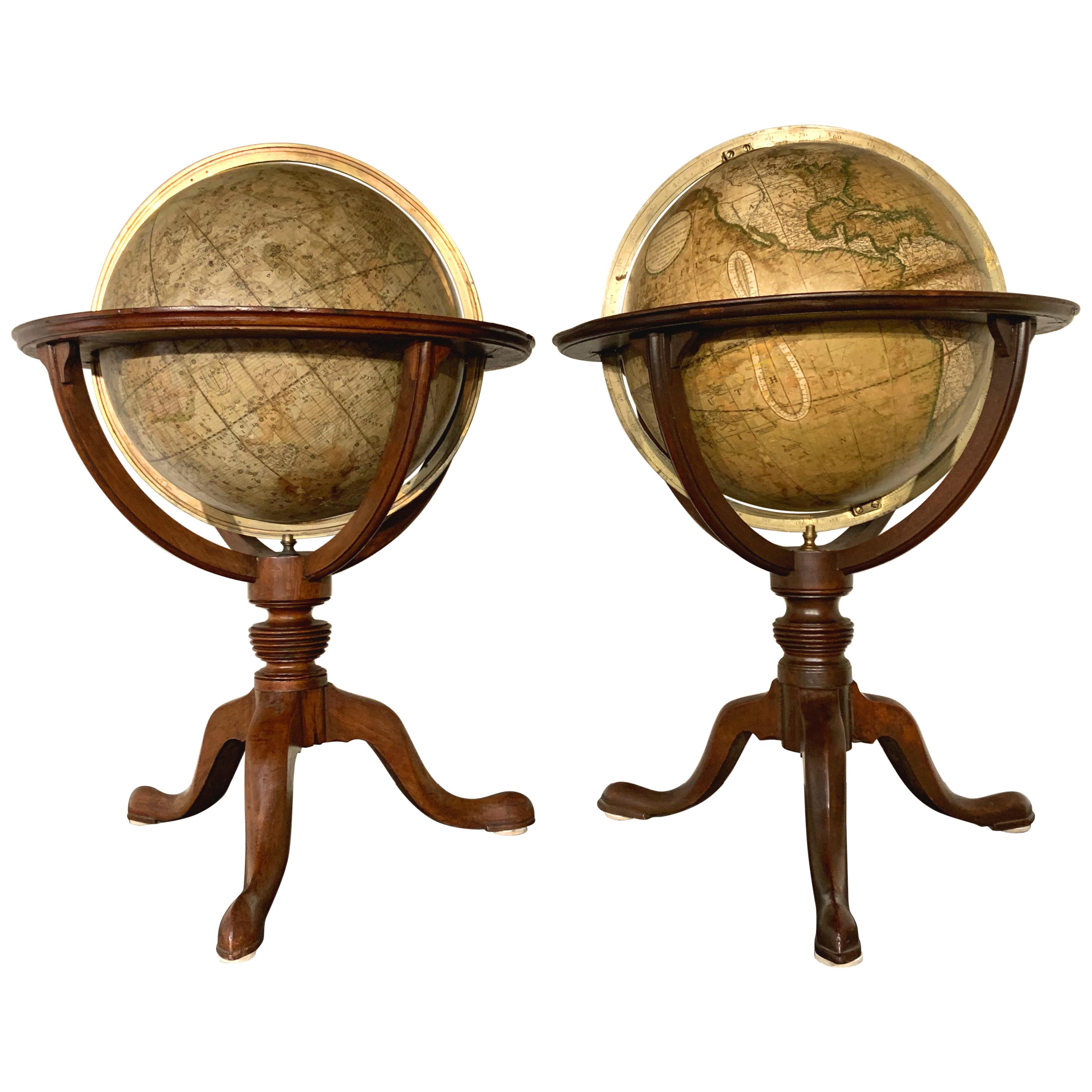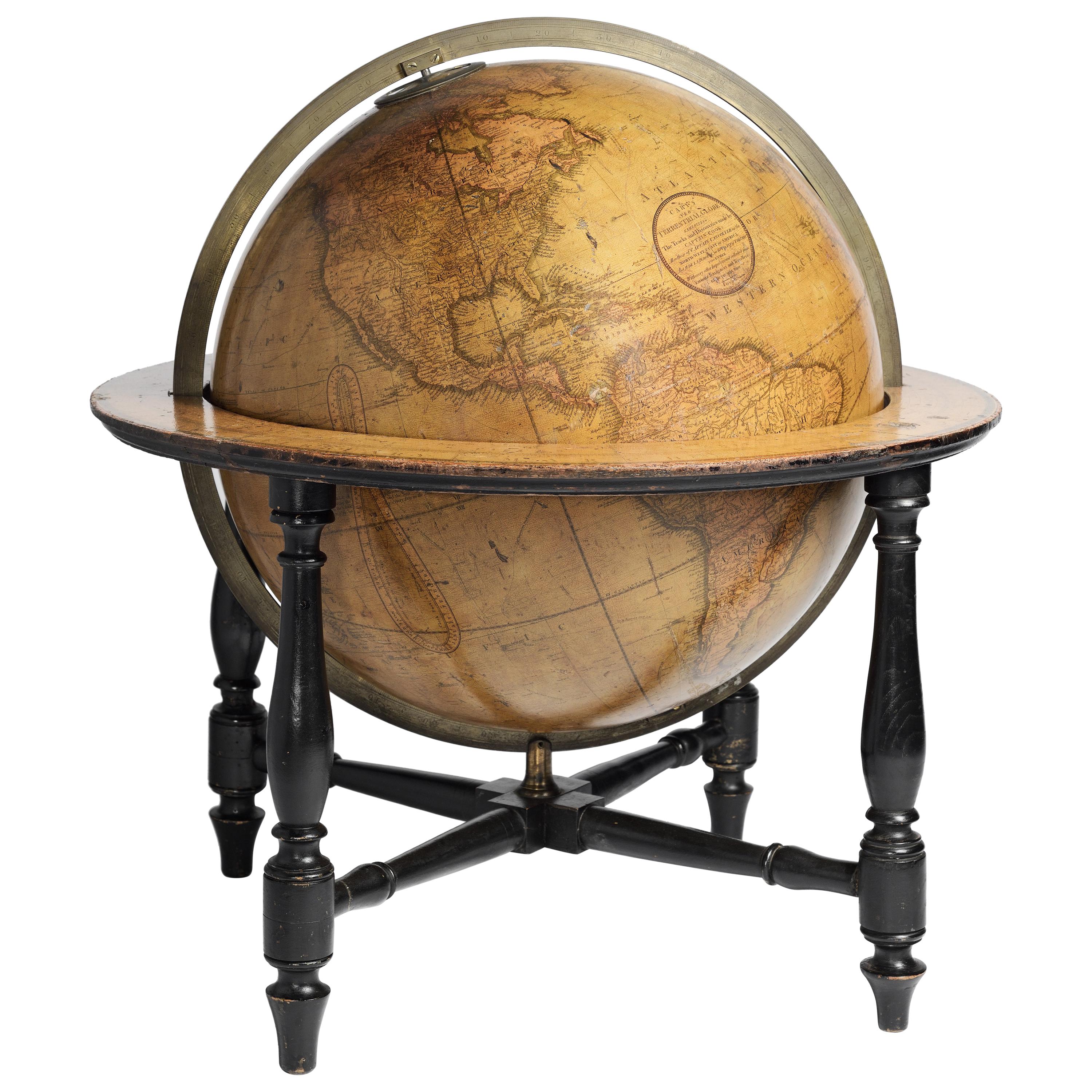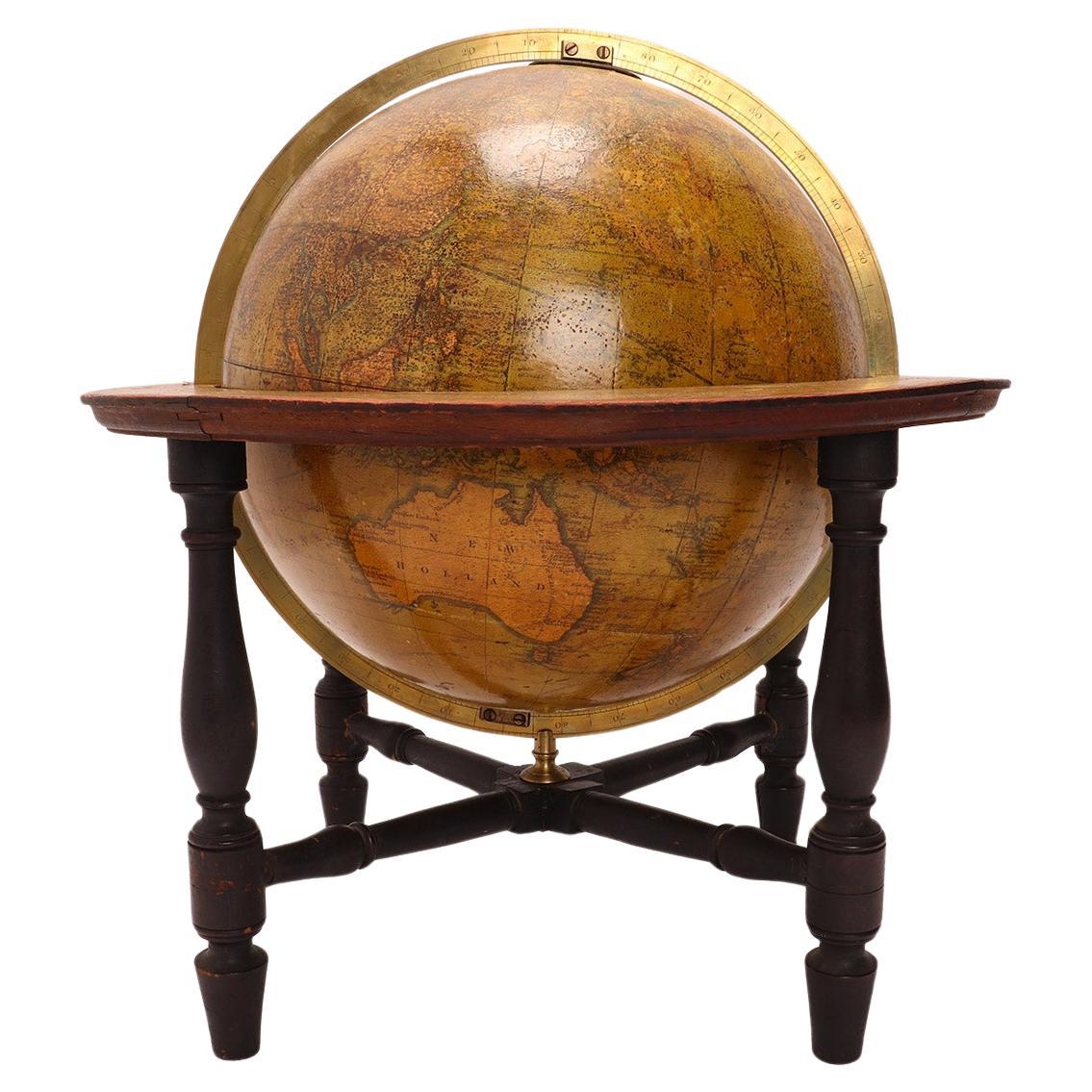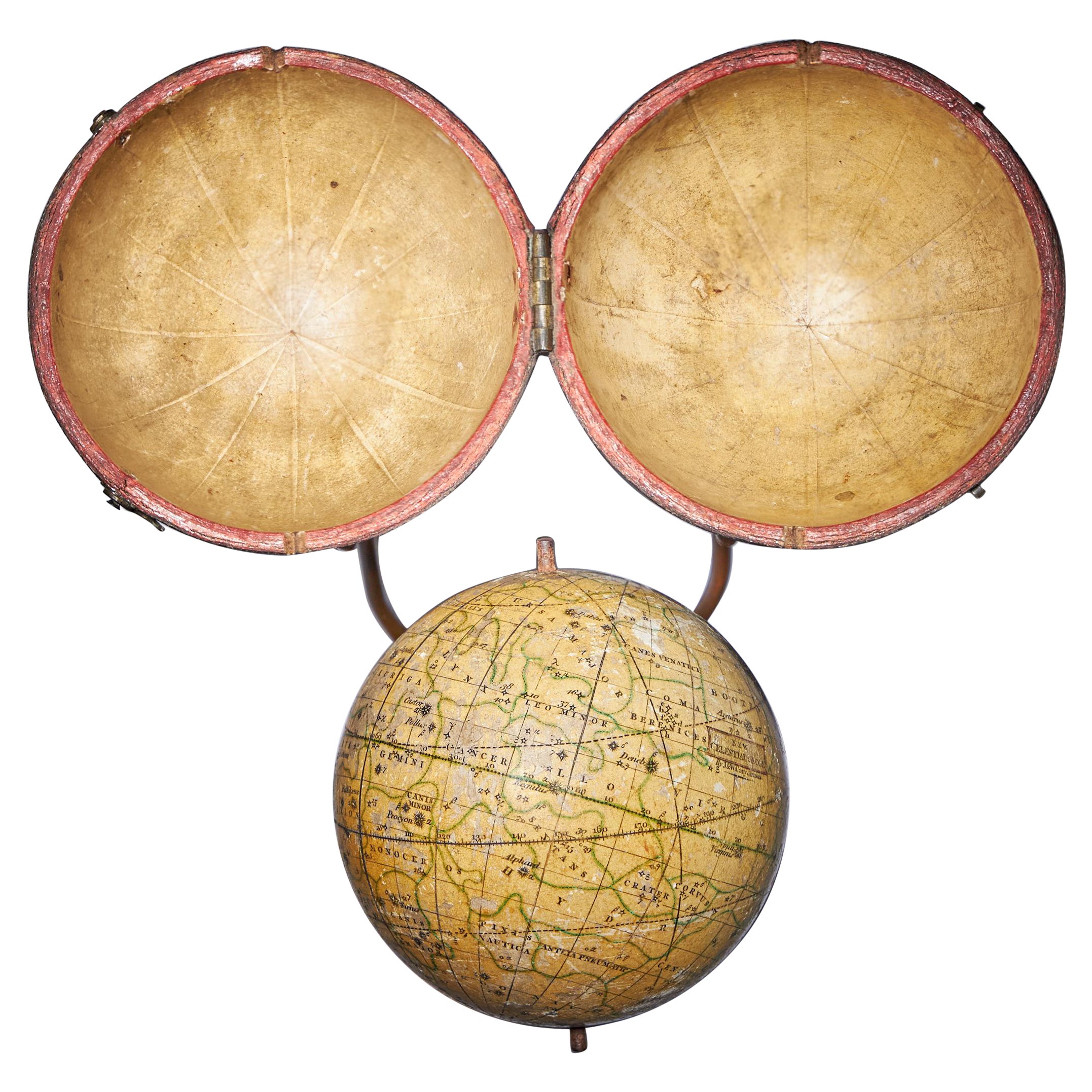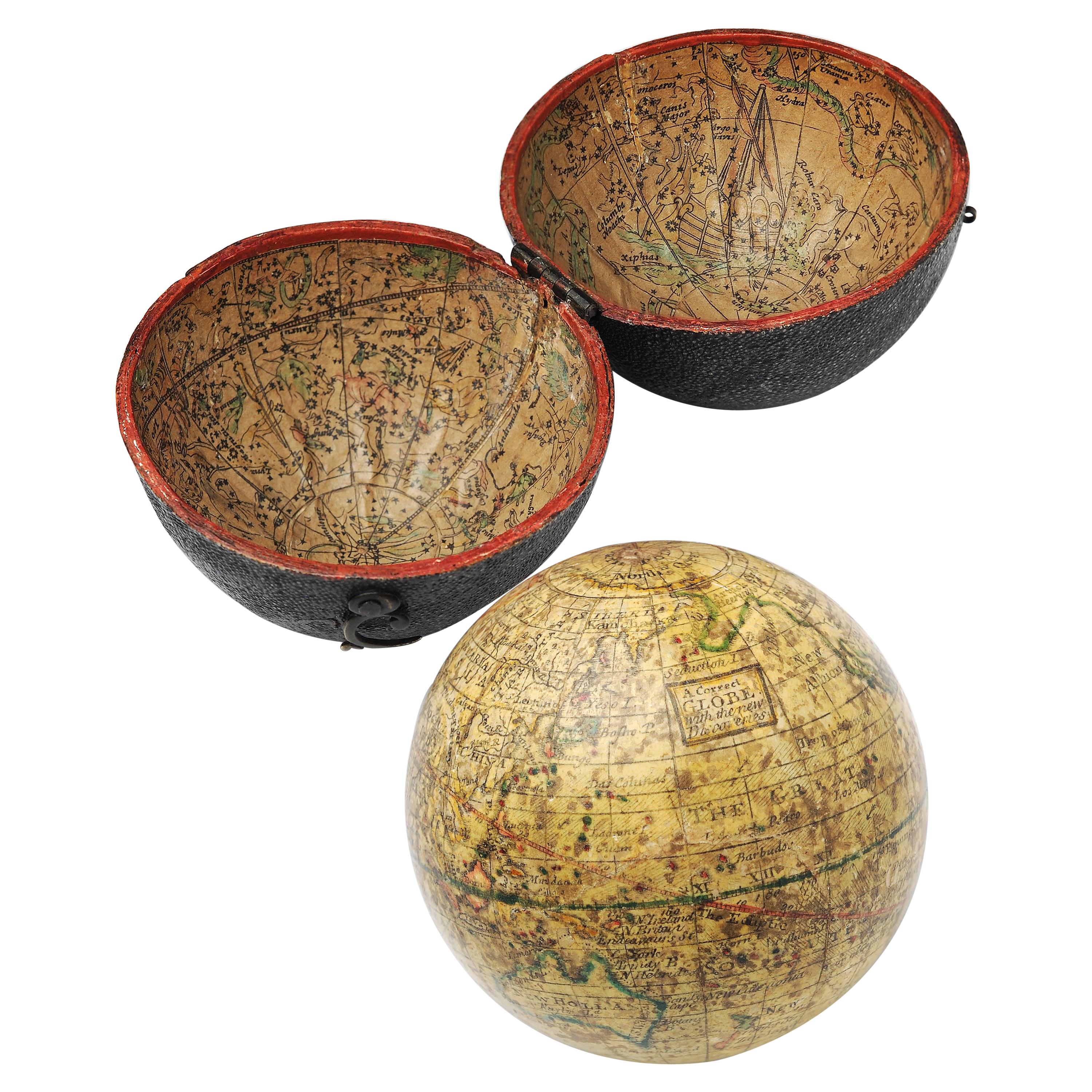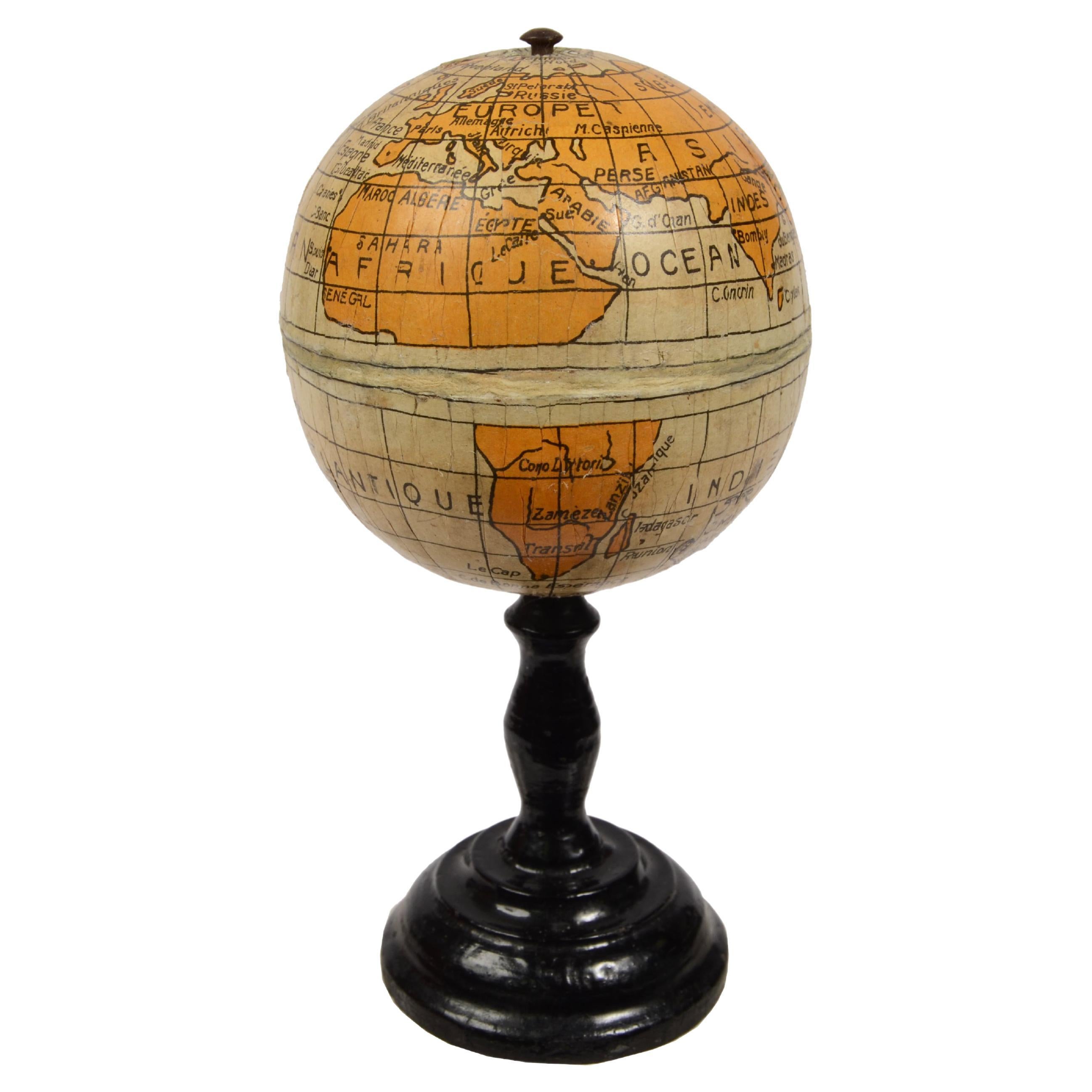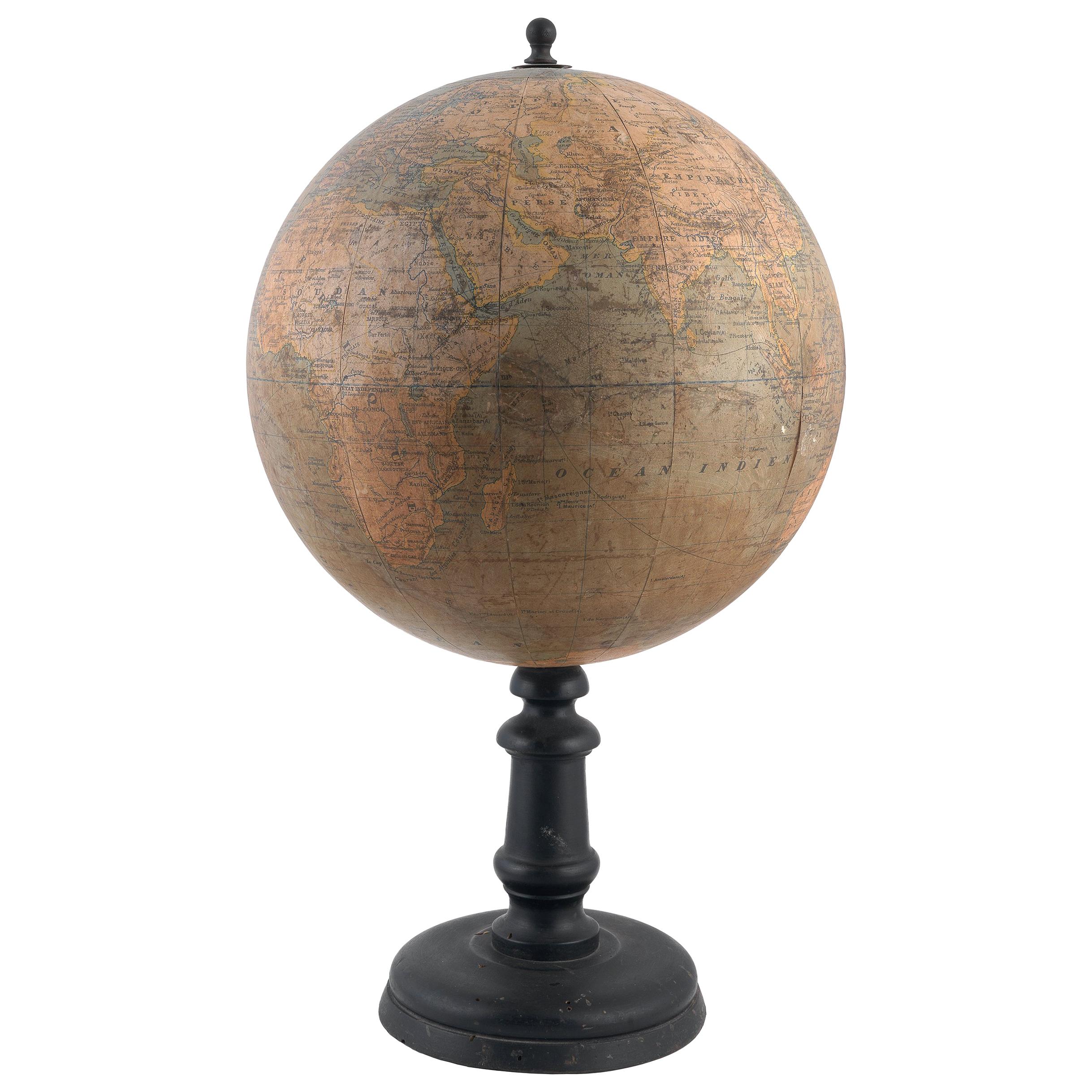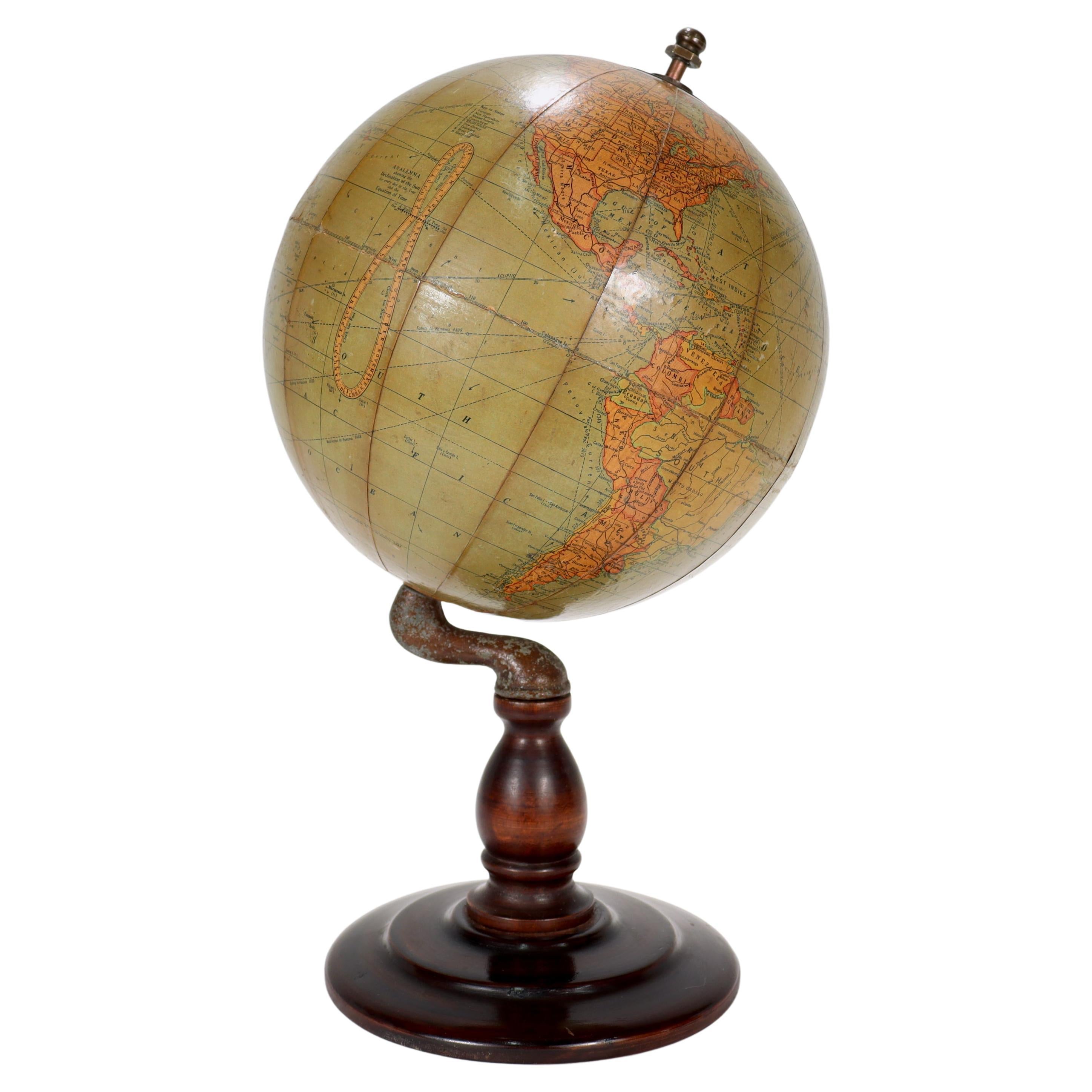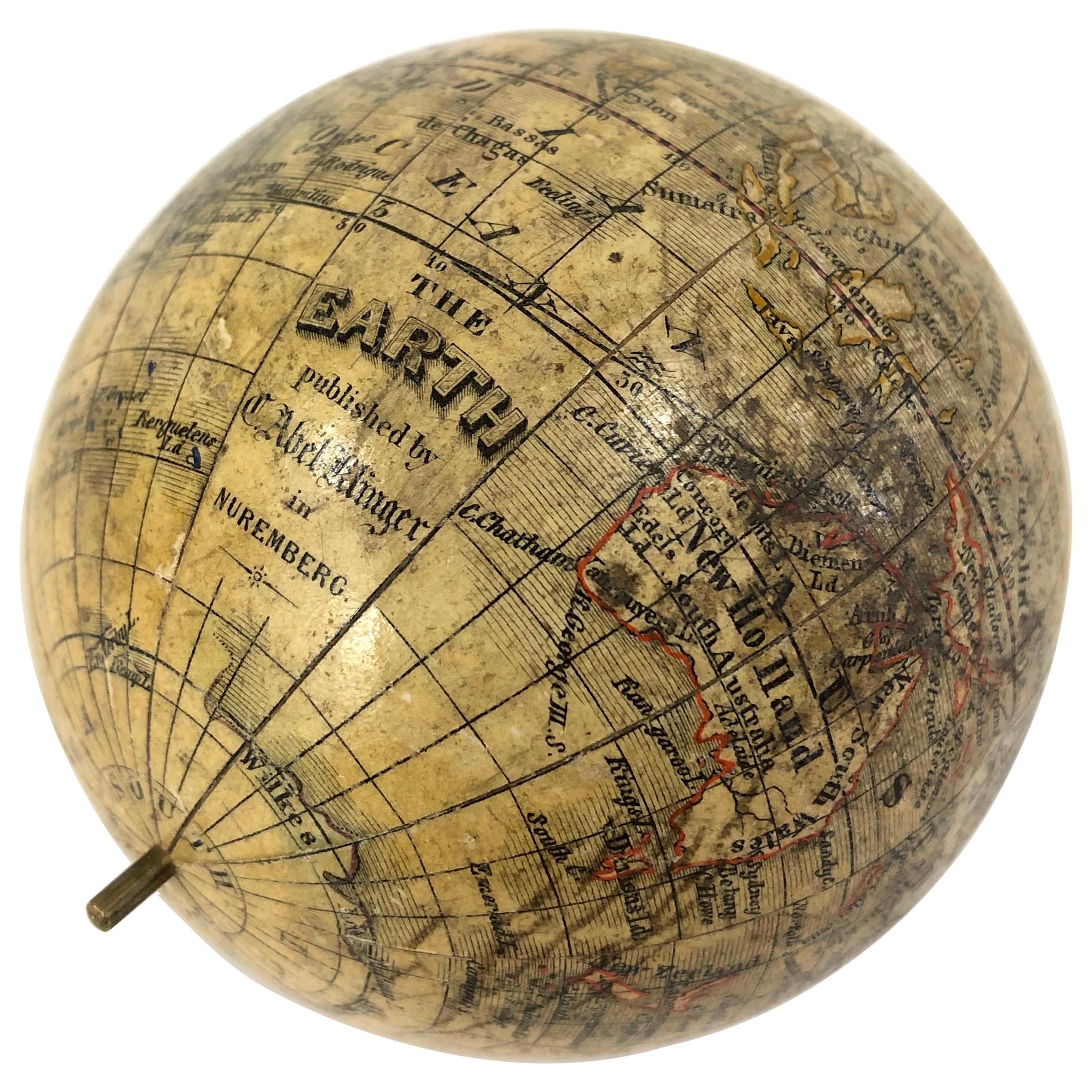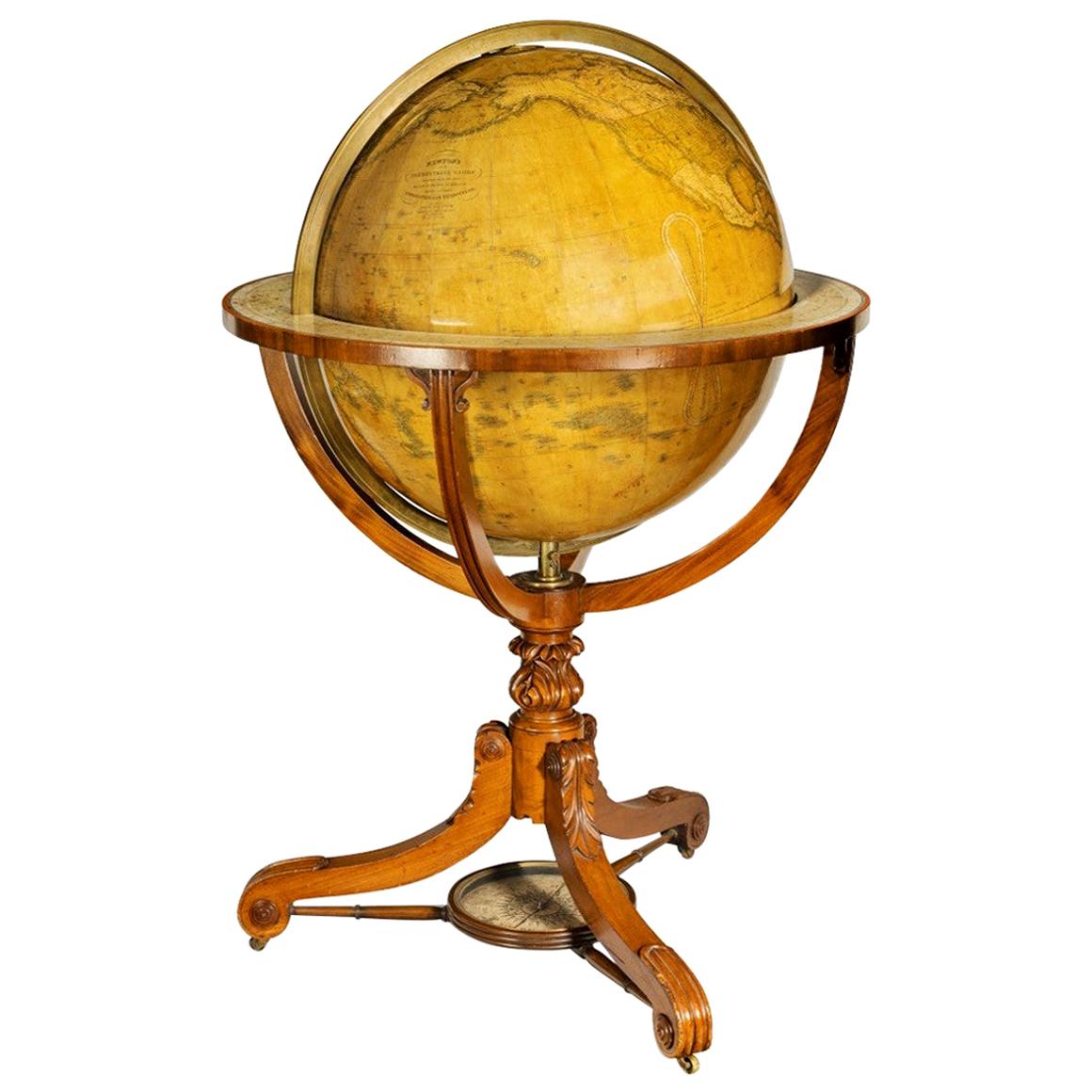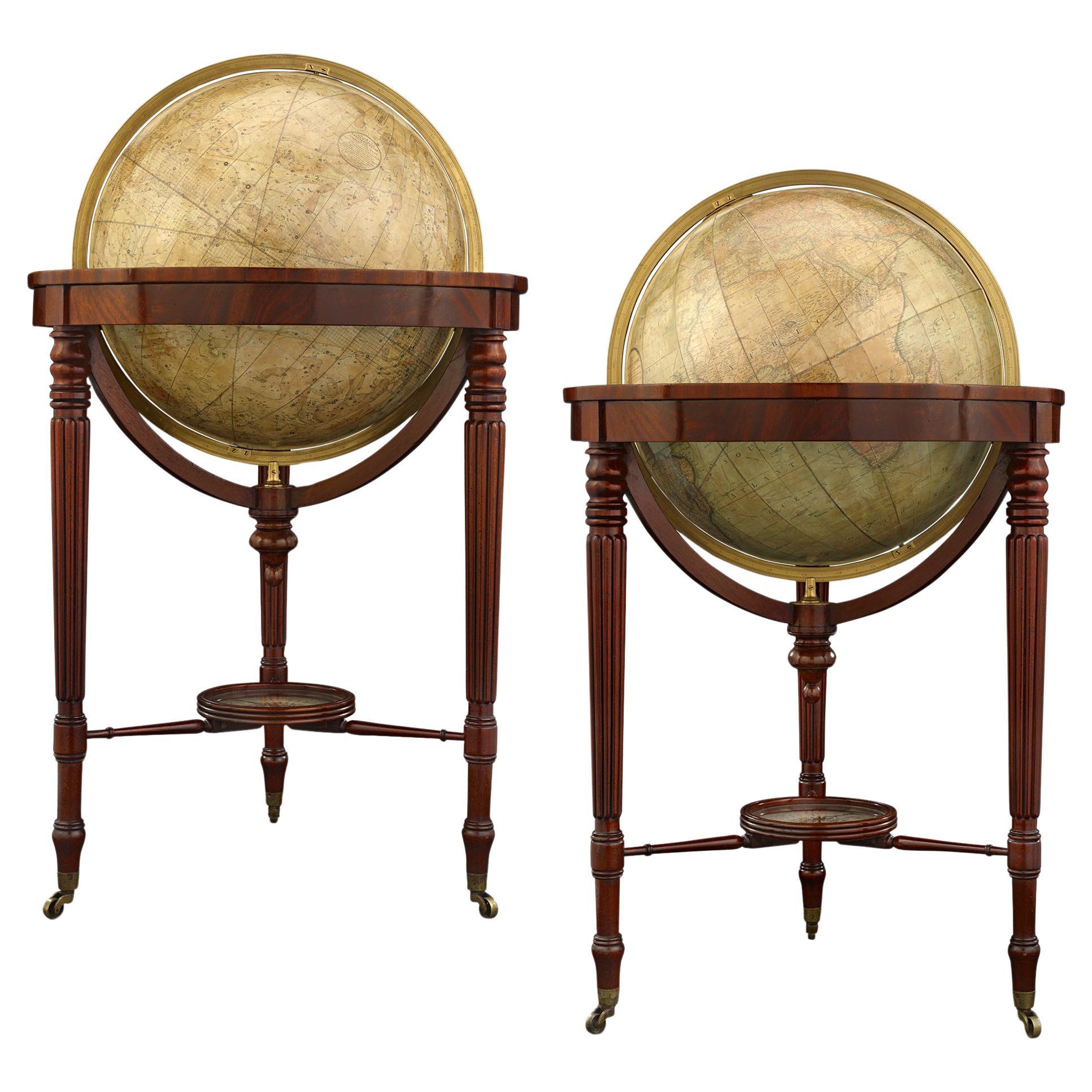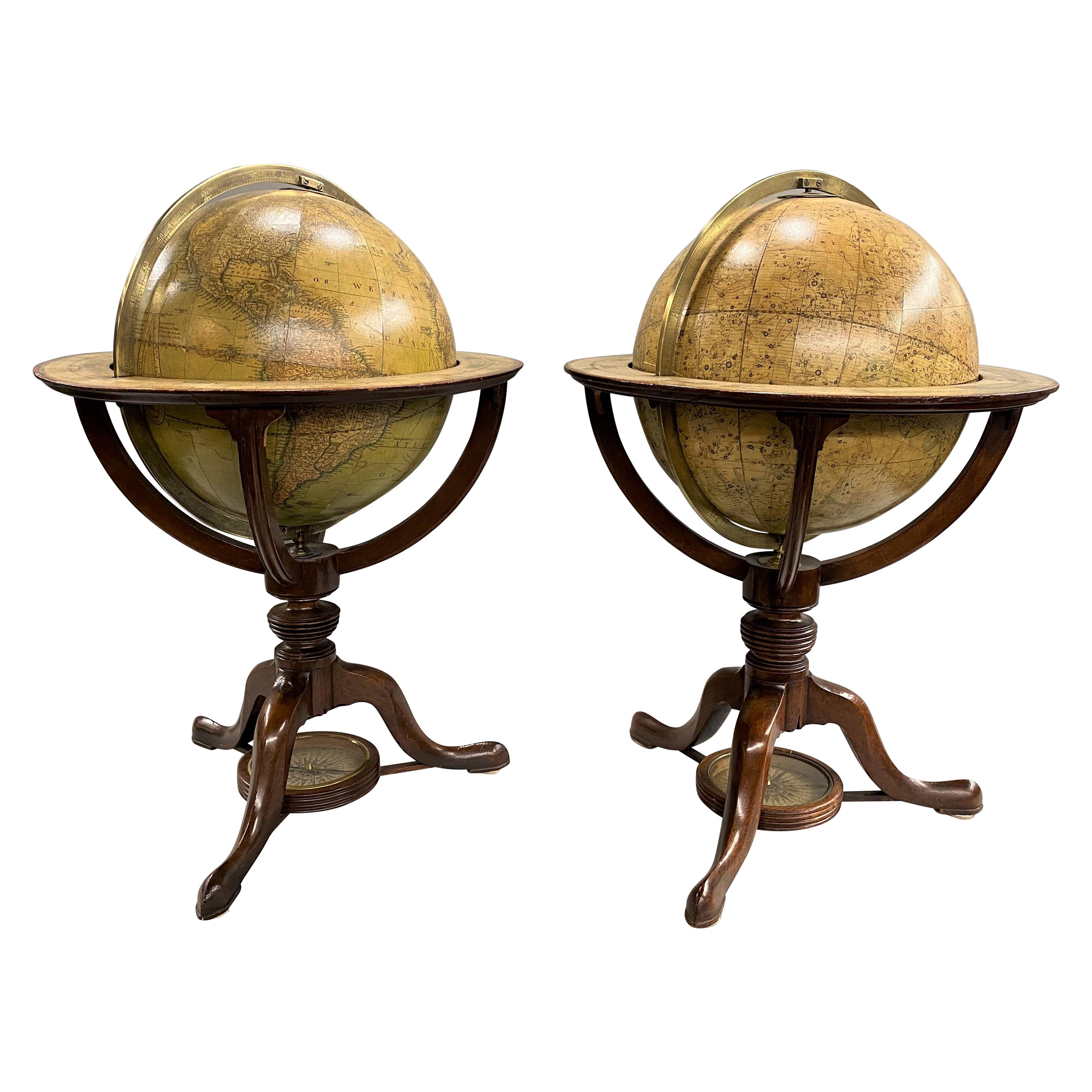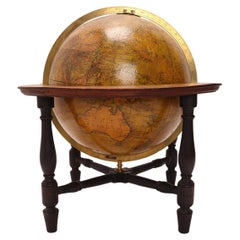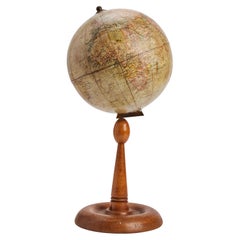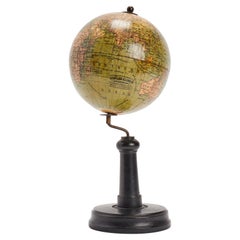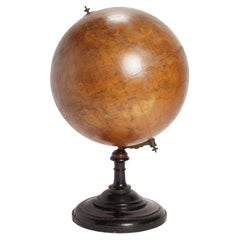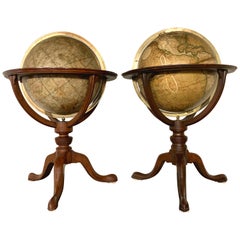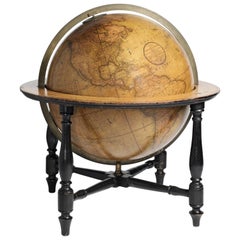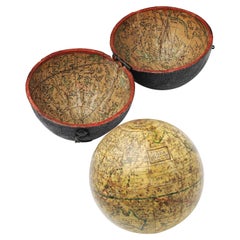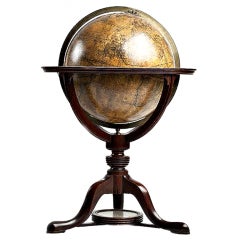
An important English terrestrial globe, signed Cary, London.
View Similar Items
Want more images or videos?
Request additional images or videos from the seller
1 of 14
An important English terrestrial globe, signed Cary, London.
About the Item
- Dimensions:Height: 25 in (63.5 cm)Width: 12 in (30.48 cm)Depth: 12 in (30.48 cm)
- Place of Origin:
- Period:
- Date of Manufacture:1798
- Condition:
- Seller Location:Milan, IT
- Reference Number:1stDibs: U120217917184
About the Seller
5.0
Vetted Professional Seller
Every seller passes strict standards for authenticity and reliability
Established in 1991
1stDibs seller since 2011
246 sales on 1stDibs
Typical response time: 6 hours
Authenticity Guarantee
In the unlikely event there’s an issue with an item’s authenticity, contact us within 1 year for a full refund. DetailsMoney-Back Guarantee
If your item is not as described, is damaged in transit, or does not arrive, contact us within 7 days for a full refund. Details24-Hour Cancellation
You have a 24-hour grace period in which to reconsider your purchase, with no questions asked.Vetted Professional Sellers
Our world-class sellers must adhere to strict standards for service and quality, maintaining the integrity of our listings.Price-Match Guarantee
If you find that a seller listed the same item for a lower price elsewhere, we’ll match it.Trusted Global Delivery
Our best-in-class carrier network provides specialized shipping options worldwide, including custom delivery.More From This Seller
View AllRare 12 inches terrestrial globe signed Cary, London United Kingdom 1800.
Located in Milan, IT
Large 12" terrestrial globe made by the famous Cary brothers, made with a wooden frame, refined plaster polished to perfection, and colored paper gores. The globe is supported by a f...
Category
Antique Early 19th Century English Scientific Instruments
Materials
Brass
A terrestrial globe by Földgömb, Hungary circa 1930.
Located in Milan, IT
Medium-sized paper mache terrestrial globe on a turned maple wood base. The globe is tilted and connected to the base by a metal stand. Published by Földgömb. Budapest, Hungary circa...
Category
Early 20th Century Hungarian Globes
Materials
Metal
A small didactic terrestrial globe by Columbus, Germany 1920.
Located in Milan, IT
On a wooden base worked on the lathe, with a circular foot, wavy profile and high leg, with original patina, there is a small globe, published by Columbus, Berlin. The globe is made ...
Category
Early 20th Century German Globes
Materials
Paste, Wood, Paper
Large terrestrial globe with wooden base by Pini-Gussoni, Italy 1880.
Located in Milan, IT
Large terrestrial globe (diameter 19,75”), made of paper mache on a wooden structure. The large turned base is made of black lacquered walnut wood. Cartography compiled by engineer E...
Category
Antique Late 19th Century Italian Globes
Materials
Wood
Terrestrial globe apres Mr. Rizzi Zannoni, Paris 1762.
Located in Milan, IT
Designed to be hanged to the ceiling, terrestrial globe, made out of paper machè and wood, brass hook. It is reported in the cartouche of the globe: globe terrestre d’après Mr. Rizz...
Category
Antique Mid-18th Century French Scientific Instruments
Materials
Brass
A little terrestral globe by Newton, London 1820.
Located in Milan, IT
Over a round foot that rise with a central element with moved profile is connected the brass half meridian, which holds at the ends the metal axe of the little globe. The base is mad...
Category
Antique Early 19th Century English Globes
Materials
Metal, Brass
You May Also Like
Pair of 19th Century English J & W Cary Celestial/Terrestrial Table Model Globes
By John & William Cary
Located in Milford, NH
A fine assembled pair of 12-inch English table model globes on stands manufactured by J & W. Cary, the left globe with cartouche labeled “The New Celestial Globe, on which are correc...
Category
Antique Early 19th Century English Globes
Materials
Brass
18-inch Globe, Cary's, London, 1840
By Cary’s
Located in Milano, IT
John and William Cary
Updated by George and John Cary
Terrestrial Globe
London, 1840
lb 22 (kg 10)
Slight surface abrasions due to use. A small crack on the horizon circle.
The globe rests in its original Dutch style stand with four supporting turned wood columns.
It measures 26 in in height x 23.6 in in diameter with the diameter of the sphere measuring 18 in; 66 cm in height x 60 cm in diameter with the diameter of the sphere measuring 45.72 cm.
The 18 inch...
Category
Antique 1840s English Early Victorian Globes
Materials
Paper, Wood
Rare George III Celestial Pocket Globe by Cary, London
By Cary
Located in Oxfordshire, United Kingdom
A fine and rare 3" celestial pocket globe by G & W Cary, Strand, London circa 1791, housed in its original sharkskin case.
A companion globe to terrestrial globes of this type we...
Category
Antique Late 18th Century English George III Aviation Objects
Materials
Plaster
English Pocket Globe, London, Circa 1775-1798
By Herman Moll
Located in Milano, IT
Pocket globe
London, between 1775 and 1798
Re-edition of the globe of Hermann Moll (1678-1732) dated 1719
The globe is contained in its original case, which itself is covered in shark skin.
There are slight gaps in the original paint on the sphere. The case no longer closes.
The sphere measures 2.7 in (7 cm) in diameter whereas the case measures 2.9 in (7.4 cm) in diameter.
lb 0.22 (kg 0.1)
The globe is made up of twelve printed paper gores aligned and glued to the sphere.
In the North Pacific Ocean there is a cartouche with the inscription:
A Correct
Globe
with the new
Discoveries.
The celestial globe is depicted on the inside of the box and is divided into two hemispheres with the cartouche:
A correct globe
with ye new cons
relations of Dr.
Halley & c.
It shows the ecliptic divided into the days of the zodiacal calendar and the constellations represented as animals and mythological figures.
On the globe are delineated the equinoctial line, divided by degrees and hours, the ecliptic and the meridian (passing west of Greenwich). The continents are shaded and outlined in pink, green and yellow. It shows: the Cook routes; a wind rose in the Southern Indian Ocean; Antarctica without land; Africa with Negroland (Hermann Moll is considered the first geographer to name the West African region in his 1727 map. (Encyclopaedia Britannica, ed. 1902, under "States of Central Africa"); Tartary in Central Asia; the Mogul kingdom in northern India; in North America only New England, Virginia, Carolina, Florida, Mississippi are identified; California is already a peninsula; the northwest coast of America is "unknown parts" (Alaska is not described and it is only partially delineated, it was to become part of the United States in 1867); Mexico is named "Spain"; Central South America "Amazone America". Australia (which was to be so named after 1829) is called New Holland. The route of Admiral Anson is traced (1740) and the trade winds are indicated by arrows. (See Van der Krogt, P., Old Globes in the Netherlands, Utrecht 1984, p. 146 and Van der Krogt, P. - Dekker, E., Globes from the Western World, London 1993, pp. 115.)
Elly Dekker, comparing Moll’s 1719 globe and his re-edition (of which the one described above is a sample), identifies the differences between them: the two editions are quite similar to each other, but in the "anonymous" globe, compared to the previous globe of 1719, California looks like a proper peninsula - the reports of the Spanish explorers of the region had given rise to uncertainty over whether it was connected to the mainland or not. The geographical nature of California was confirmed after the explorations of Juan Bautista de Anza (1774-1776). The routes of Dampier's journey were partially erased and the route of Captain James Cook's first voyage was superimposed on them, and the geography of Australasia was adapted accordingly, including the denomination of the Cook Strait. See Dekker, Elly, Globes at Greenwich, 1999.
An important ante quem element is represented by Tasmania: it is not separated from Australia by the Bass Strait...
Category
Antique Late 18th Century English George III Globes
Materials
Shagreen, Paper
End XIX century Small Terrestrial Globe Signed C.M.C Paris Papier Maché Sphere
Located in Milan, IT
Small terrestrial globe signed C.M.C. Paris, end of XIX century. Papier maché sphere and turned and ebonized wooden base. Height cm 13 - inches 5.1, diameter of sphere cm 6,5 - inche...
Category
Antique 1890s French Globes
Materials
Paper
Late 19th Century Terrestrial Globe, French
Located in Firenze, IT
SHIPPING POLICY:
No additional costs will be added to this order.
Shipping costs will be totally covered by the seller (customs duties included).
By Charles Delagrave, Paris. On eb...
Category
Antique 1890s French Napoleon III Globes
Materials
Paper
